Abstract
Historically, behavior analysis and trait psychology have had little in common; however, recent developments in behavior analysis bring it closer to one of the core assumptions of the trait approach: the stability of behavior over time and, to a lesser extent, environments. The introduction of the concept of behavioral momentum and, in particular, the development of molar theories have produced some common features and concerns. Behavior-analytic theories of stability provide improved explanations of many everyday phenomena and make possible the expansion of behavior analysis into areas that have been inadequately addressed.
Keywords: traits, dispositions, behavioral momentum, molar theory, teleological behaviorism, moral attribution, behavioral stability
Full text
PDF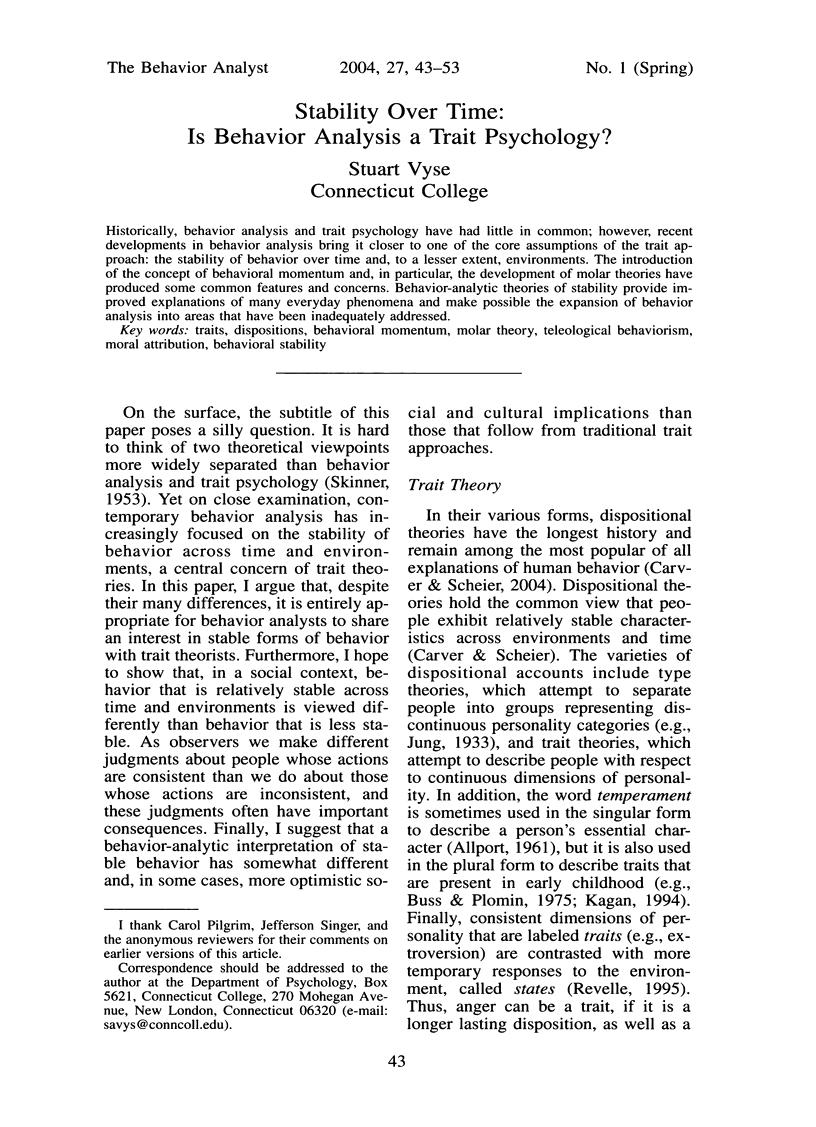
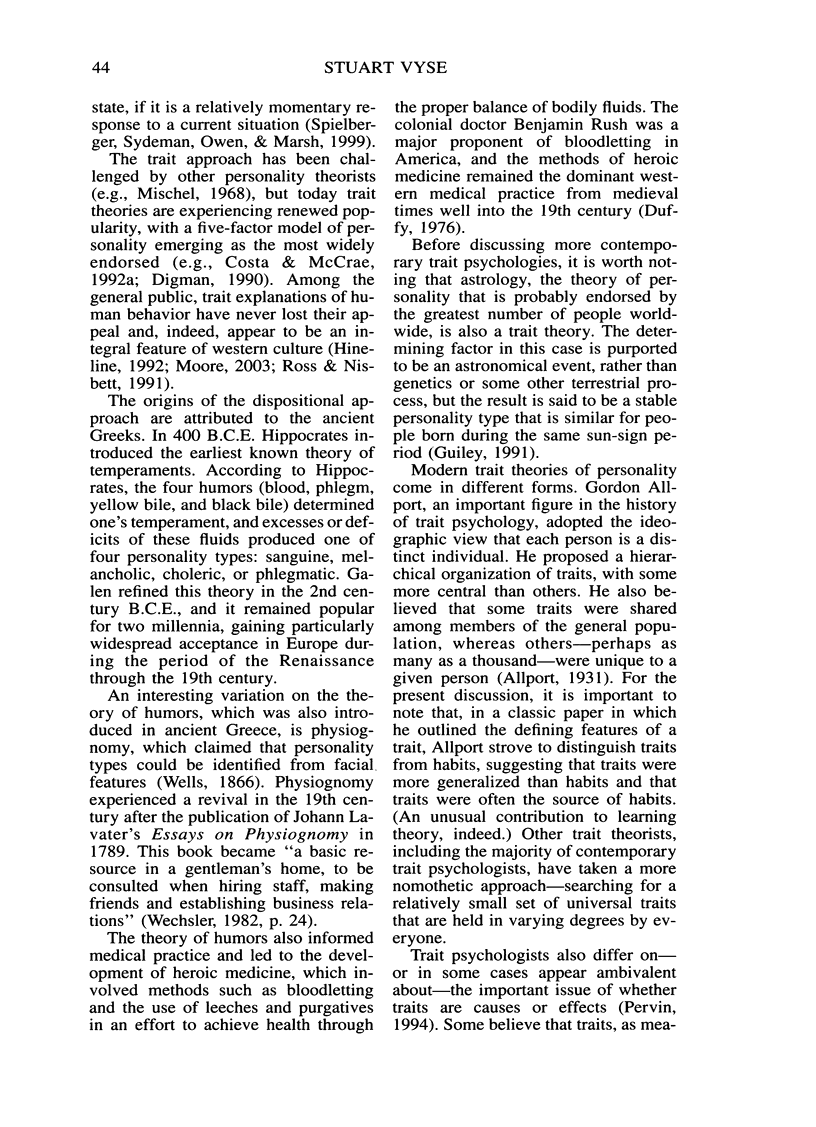
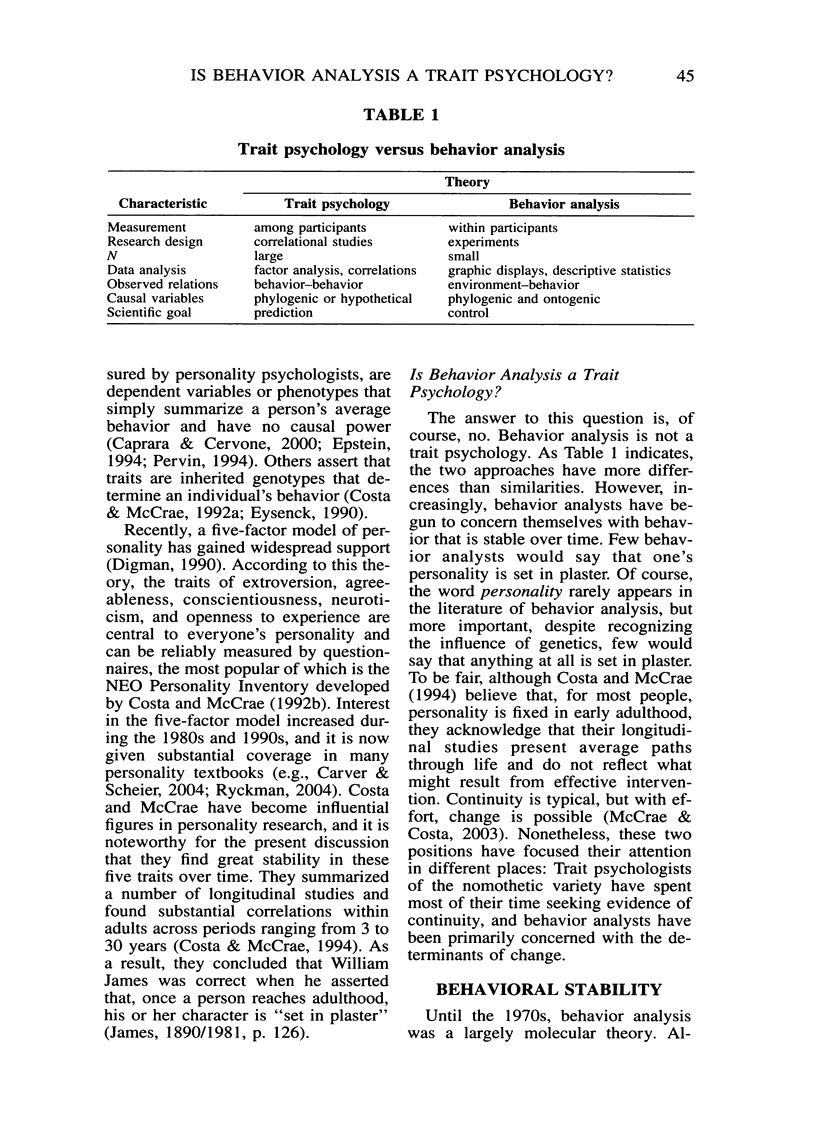
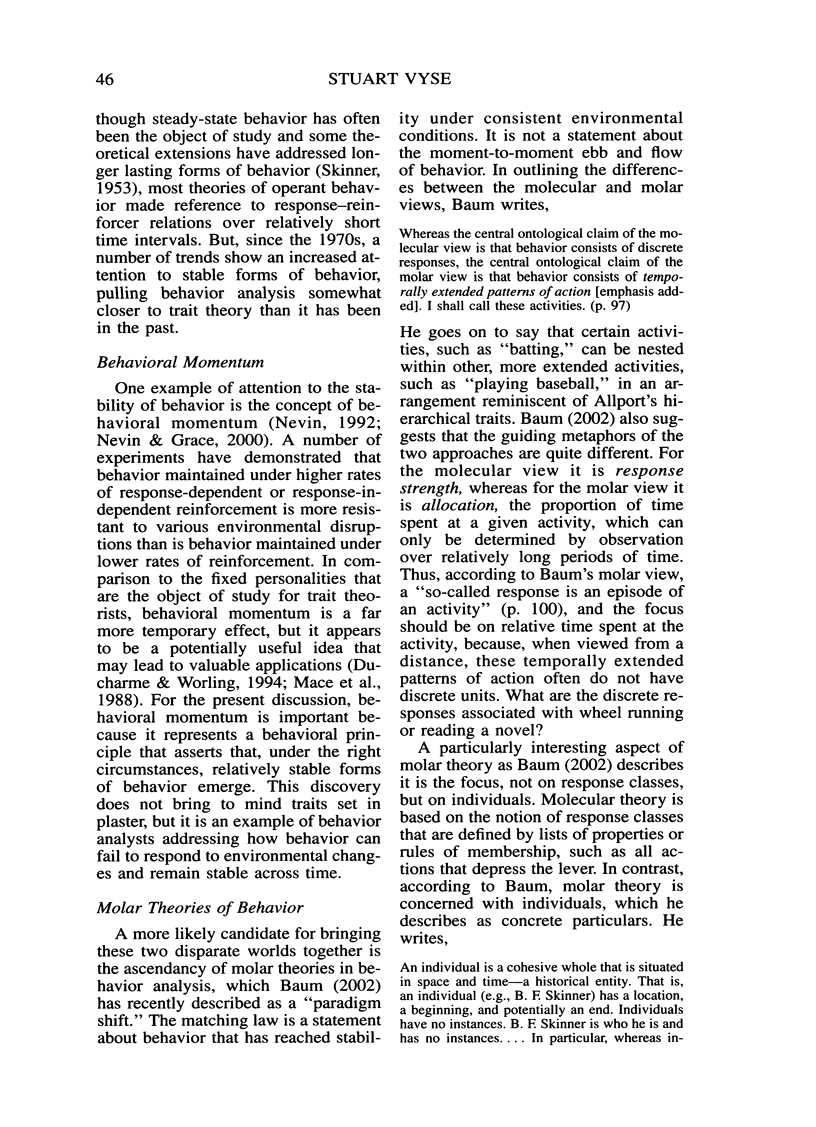

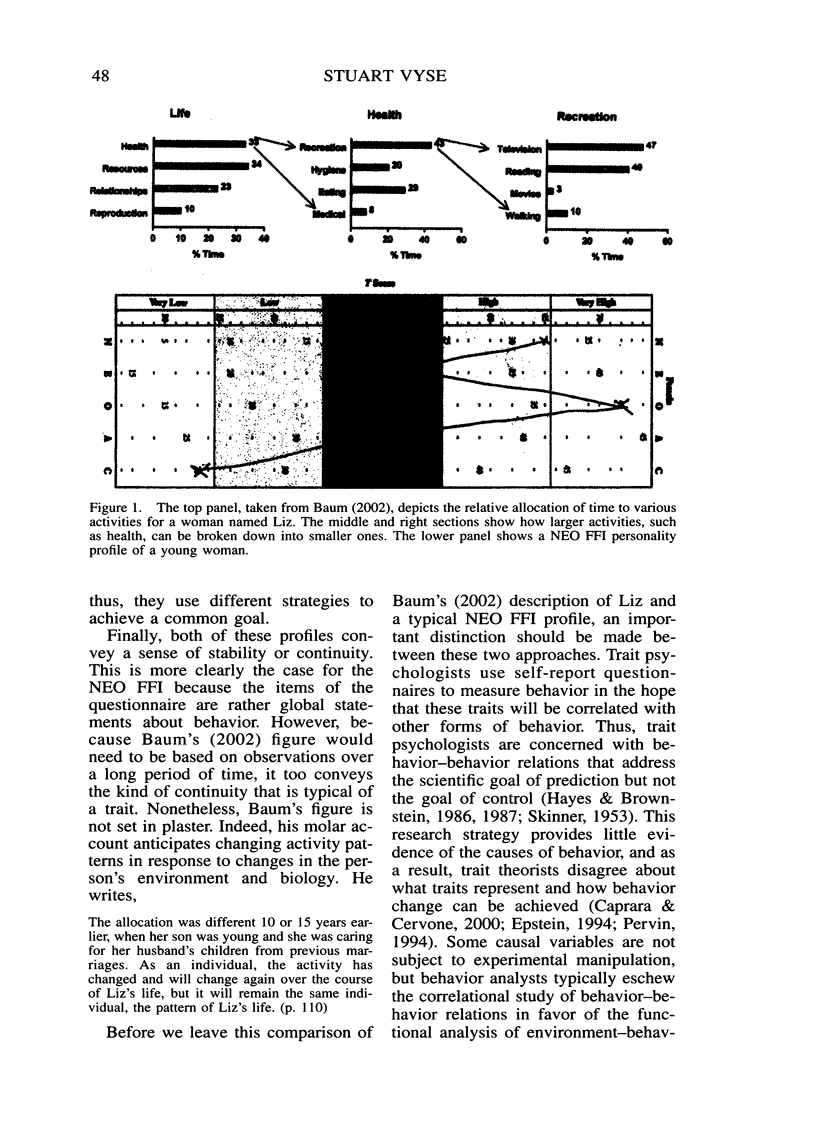
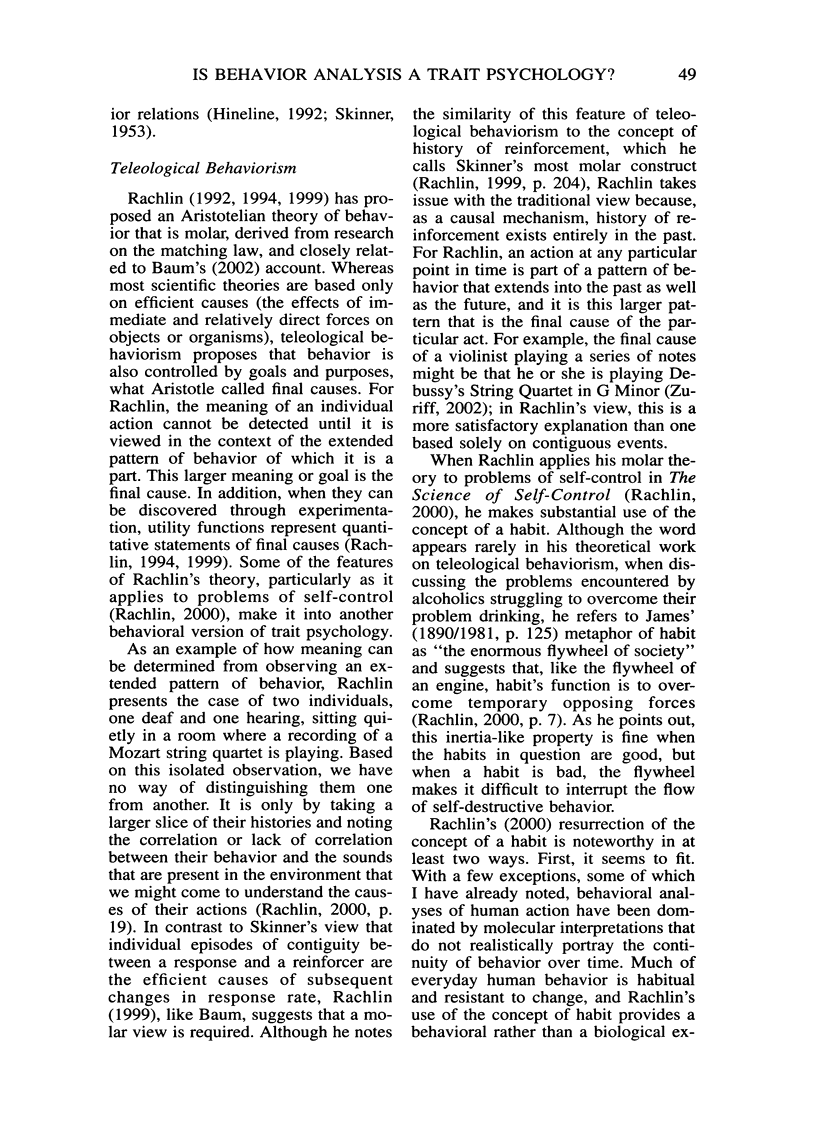
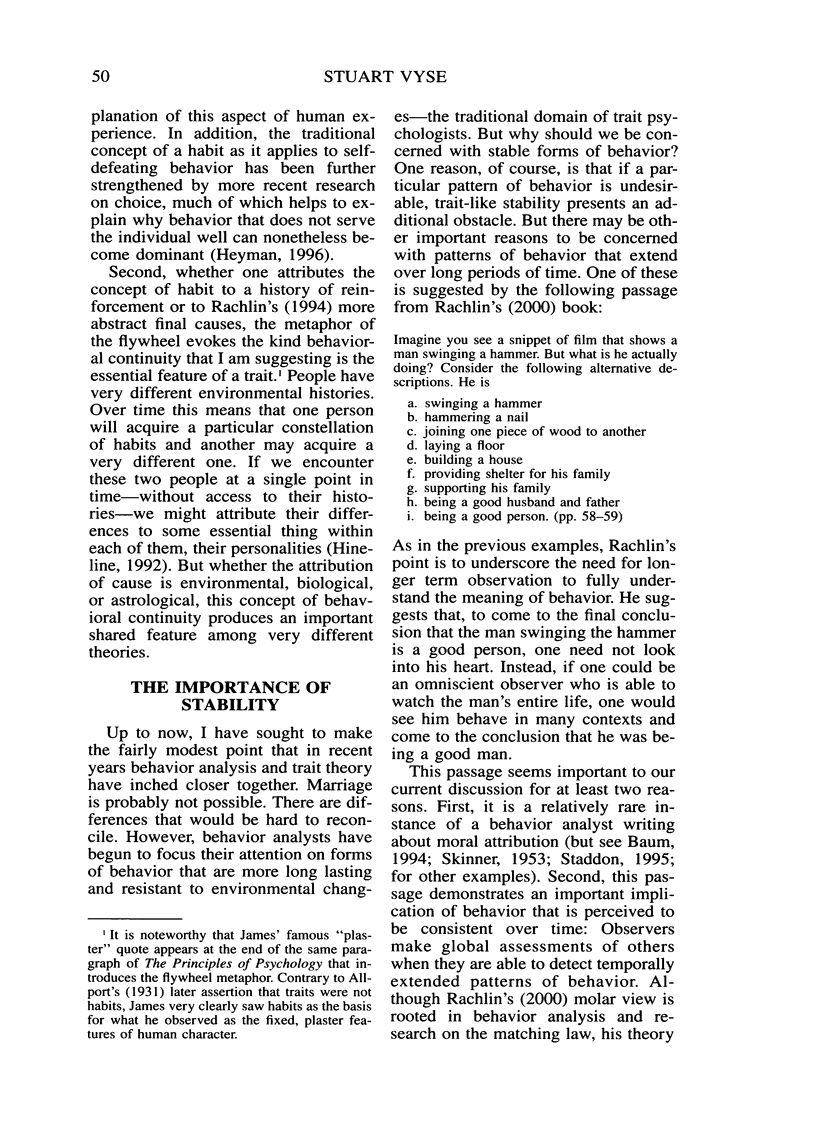
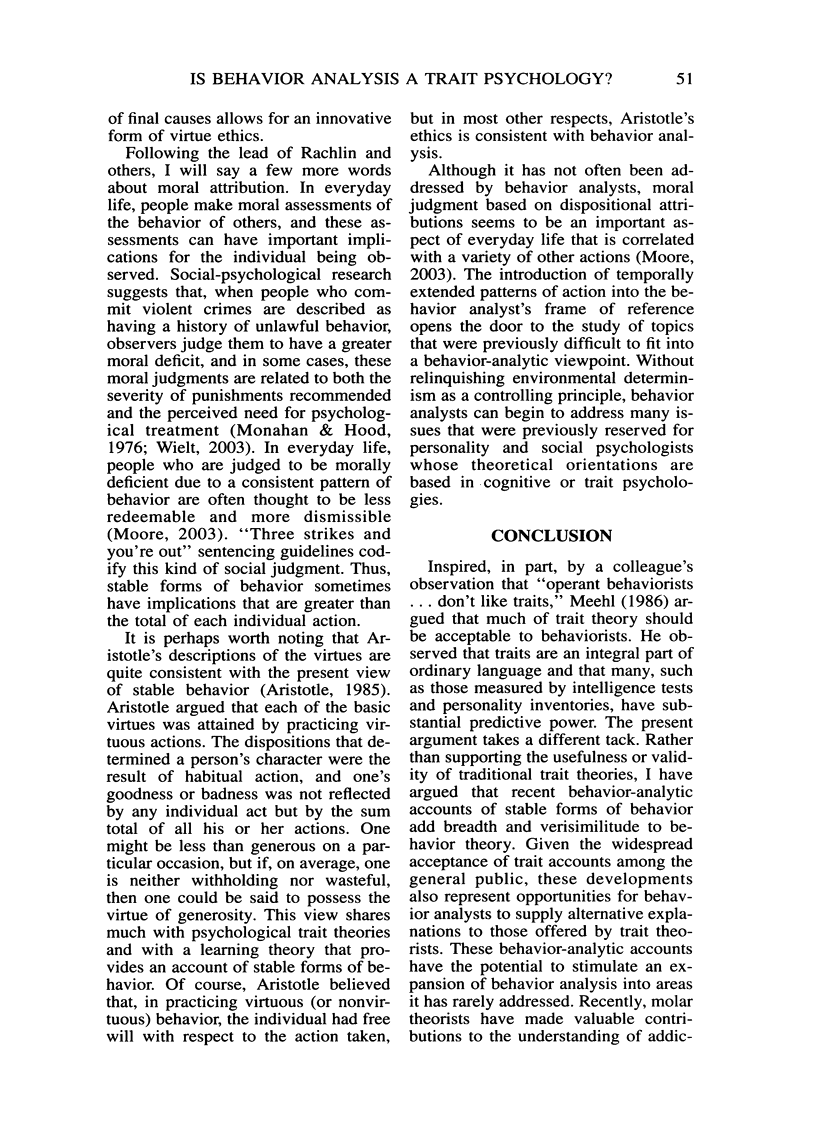

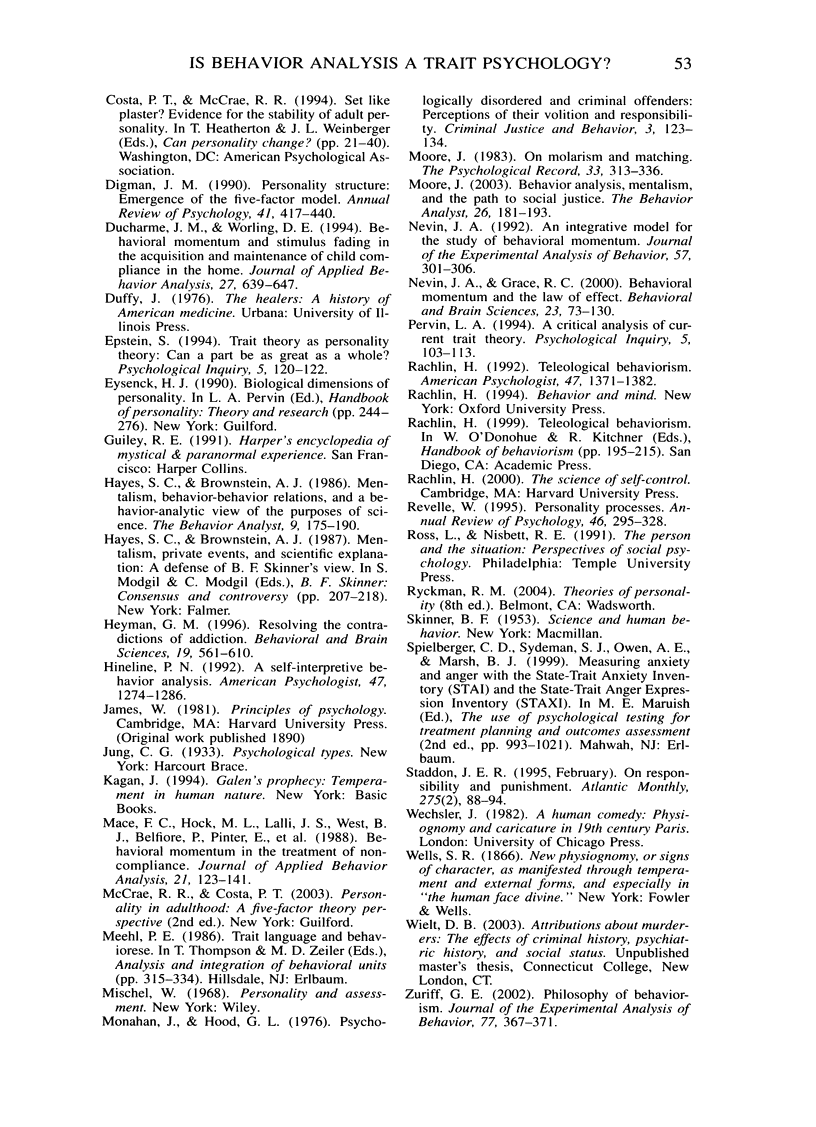
Images in this article
Selected References
These references are in PubMed. This may not be the complete list of references from this article.
- Baum William M. From molecular to molar: a paradigm shift in behavior analysis. J Exp Anal Behav. 2002 Jul;78(1):95–116. doi: 10.1901/jeab.2002.78-95. [DOI] [PMC free article] [PubMed] [Google Scholar]
- Ducharme J. M. Behavioral momentum and stimulus fading in the acquisition and maintenance of child compliance in the home. J Appl Behav Anal. 1994 Winter;27(4):639–647. doi: 10.1901/jaba.1994.27-639. [DOI] [PMC free article] [PubMed] [Google Scholar]
- Hayes S. C., Brownstein A. J. Mentalism, behavior-behavior relations, and a behavior-analytic view of the purposes of science. Behav Anal. 1986 Fall;9(2):175–190. doi: 10.1007/BF03391944. [DOI] [PMC free article] [PubMed] [Google Scholar]
- Hineline P. N. A self-interpretive behavior analysis. Am Psychol. 1992 Nov;47(11):1274–1286. doi: 10.1037//0003-066x.47.11.1274. [DOI] [PubMed] [Google Scholar]
- Mace F. C., Hock M. L., Lalli J. S., West B. J., Belfiore P., Pinter E., Brown D. K. Behavioral momentum in the treatment of noncompliance. J Appl Behav Anal. 1988 Summer;21(2):123–141. doi: 10.1901/jaba.1988.21-123. [DOI] [PMC free article] [PubMed] [Google Scholar]
- Moore J. Behavior analysis, mentalism, and the path to social justice. Behav Anal. 2003 Fall;26(2):181–193. doi: 10.1007/BF03392075. [DOI] [PMC free article] [PubMed] [Google Scholar]
- Nevin J. A. An integrative model for the study of behavioral momentum. J Exp Anal Behav. 1992 May;57(3):301–316. doi: 10.1901/jeab.1992.57-301. [DOI] [PMC free article] [PubMed] [Google Scholar]
- Nevin J. A., Grace R. C. Behavioral momentum and the law of effect. Behav Brain Sci. 2000 Feb;23(1):73–130. doi: 10.1017/s0140525x00002405. [DOI] [PubMed] [Google Scholar]
- Rachlin H. Teleological behaviorism. Am Psychol. 1992 Nov;47(11):1371–1382. doi: 10.1037//0003-066x.47.11.1371. [DOI] [PubMed] [Google Scholar]
- Zuriff G. E. Philosophy of behaviorism. J Exp Anal Behav. 2002 May;77(3):367–371. doi: 10.1901/jeab.2002.77-367. [DOI] [PMC free article] [PubMed] [Google Scholar]



